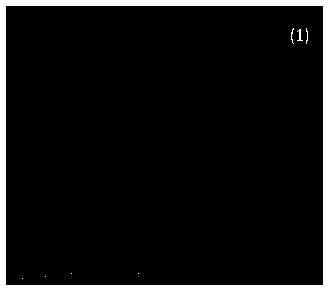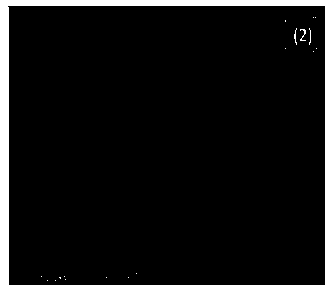Preparation method of cellulose nano-fiber/polylactic acid composite membrane
A technology of cellulose fibers and nanofibers, which is applied in fiber raw material processing, textiles and papermaking, etc., can solve the problems of poor toughness, high glass transition temperature, lack of flexibility and elasticity, etc., and achieve high crystallinity and uniform diameter distribution Effect
- Summary
- Abstract
- Description
- Claims
- Application Information
AI Technical Summary
Problems solved by technology
Method used
Image
Examples
Embodiment 1
[0037] The preparation of cellulose nanofiber / polylactic acid composite film comprises the following steps:
[0038] Step 1) Raw material treatment: use benzene alcohol extraction to remove impurities contained in lignocellulosic raw materials, including terpenes, fats, waxes, sugars, tannins, polyphenols, pigments, water-soluble polysaccharides, salts class of substances.
[0039] The specific method of using benzene alcohol extraction to remove impurities contained in lignocellulosic raw materials is to weigh 10g of wood flour on an electronic balance, place it in a Soxhlet extractor, measure 100ml of toluene and 50ml of ethanol Mix, utilize the solution that the volume ratio of toluene and ethanol is 2:1 to carry out the extraction of wood powder for 6 hours. Remove impurities therein, after extraction, wash with ethanol, filter and dry at room temperature, take it after it is completely dry.
[0040] Step 2) Chemical treatment: put the dried wood powder in 400ml of disti...
Embodiment 2
[0048] Embodiment 2: the process of preparing nanocellulose from absorbent cotton:
[0049] Put 5g of absorbent cotton, 500ml of distilled water, 4.6g of sodium chlorite and 3.8ml of glacial acetic acid in a beaker, and treat the beaker in a water bath at 75°C for 1 hour. During this process, keep stirring and The beaker should be sealed. This process was repeated 2 times to remove residual lignin. It was then treated with 5% potassium hydroxide at 90°C for 2 hours to remove residual hemicellulose. Treat the absorbent cotton with 1% hydrochloric acid for 3 hours. Then, it is processed by mechanical treatment to obtain nanocellulose. The mechanical treatment method is the same as that of wood flour.
Embodiment 3
[0050] Embodiment 3: the preparation of composite material:
[0051] Dry polylactic acid in a vacuum oven at 45°C for 24 hours, weigh 5g of polylactic acid and 50ml of methylene chloride and pour them into a beaker, place the beaker in a magnetic heating stirrer and stir at room temperature until the polylactic acid particles are completely dissolved , about 2 hours. Immerse four identical nanocellulose membranes in the polylactic acid solution, take out the samples after immersion for 2h, 4h, 6h and 8h respectively, take out the samples and dry them at room temperature for 12 hours, and then dry them in a vacuum oven at 60°C for 24 hours , to obtain nanocellulose / polylactic acid film.
PUM
| Property | Measurement | Unit |
|---|---|---|
| diameter | aaaaa | aaaaa |
| tensile strength | aaaaa | aaaaa |
| diameter | aaaaa | aaaaa |
Abstract
Description
Claims
Application Information
 Login to View More
Login to View More - R&D
- Intellectual Property
- Life Sciences
- Materials
- Tech Scout
- Unparalleled Data Quality
- Higher Quality Content
- 60% Fewer Hallucinations
Browse by: Latest US Patents, China's latest patents, Technical Efficacy Thesaurus, Application Domain, Technology Topic, Popular Technical Reports.
© 2025 PatSnap. All rights reserved.Legal|Privacy policy|Modern Slavery Act Transparency Statement|Sitemap|About US| Contact US: help@patsnap.com


